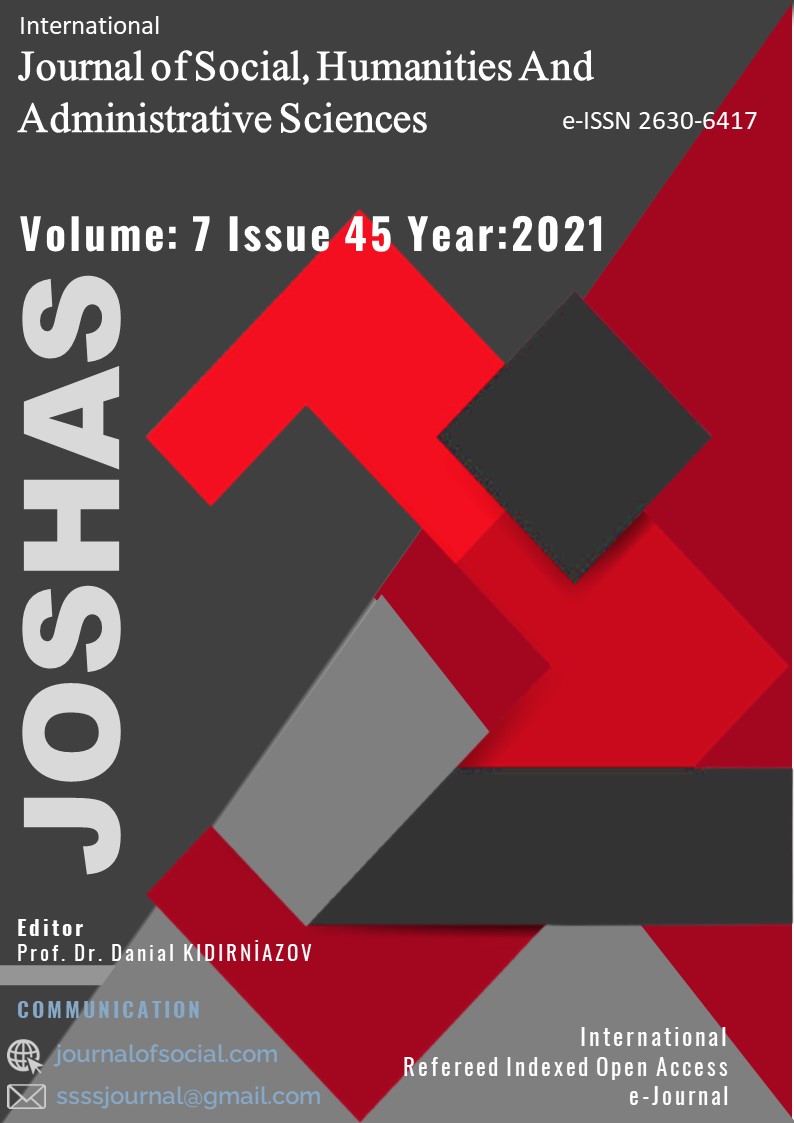Author :
Abstract
Abdülkadir Meragi’nin hayatını ilk defa kitap haline getiren Rauf Yekta, eserini yazarken, daha fazla bilgiye ulaşılması gerektiğinin farkına varmış ve daha geniş bir biyografi yazacağını özellikle belirtmişti. Ancak o eserini yazamamıştır. Ne basılmış ne de terekesinde böyle bir eserine rastlanmıştır. Meragi Orta Doğu müzik tarihinin önemli teorisyenlerinden biridir. Biyografisinin kronolojik ayrıntılarına ihtiyaç kısmen 2015 yılında yayınlanan Makasıd lis-Sultan Murad’ın Türkçesi içinde (Uslu 2015a) verilmiştir, ancak daha fazla bilgiyi bize sunacak kaynaklar zamanla ortaya çıkmaktadır. Elde ettiğimiz Tavzihu’l-elhan kitabı hem onun biyografisi hakkında yeni bilgiler verebilir, hem de Meragi’nin müzik teorisinin etkisinin boyutunu gösterebilir. Makalede bu maksatla Tavzihu’l-elhan adlı eser tanıtılmış ve Meragi biyografisine sunacağı bilgilerden yararlanma yoluna gidilmiştir. Eserin ayrıntılı incelenmesi bir makale sınırlarını aşacağı için, makalenin amacı ve konusu Meragi hakkında verdiği bilgilerle sınırlandırılmıştır. Eser Meragi’den çokça bahsetmektedir. Bazı ifadeleriyle kaynaklarda verilen onun hakkındaki biyografik bilgileri doğrulamaktadır. Fakat farklı ve yeni bilgiler de vermektedir. Eserde verilen ilginç bilgiler arasında Meragi’nin altı telli udun mucidi olduğundan ve tellere verdiği adlardan; bu tellerden elde edilen şedlerden; 12 makam 6 avaze 24 şubeden; farklı adlandırma yapılmış şubelerden ve dizilerden; mutlak-tel üzerinde 17 perdenin ebced sembollerinden; oğlu Abdurrahman’dan; birçok çalgıdan bahsetmektedir. Bu bilgilerin çoğu Meragi’nin eserinde olmamasına rağmen makalede eserin hangi müzik ekolüne ait olduğu da sorgulanmıştır. Sonuç olarak Behmeni sarayı katip ve müzisyenlerinden Ruhbani’nin Tavzihu’l-elhan adlı eseri üzerinde yapılan araştırma, 1500 yıllarında yazıldığını ve Meragi’nin teorik görüşlerinin etkisini taşımakta olduğunu, Herat Sistemciler Ekolü’nü yansıtan bir eser olduğunu göstermiştir.
Keywords
Abstract
Rauf Yekta, who made Abdülkadir Meragi's life into a book for the first time, was aware of the need to obtain more information while writing his work and specifically stated that he would write a wider biography. However, he could not write his work. No such work has been found either in print or in his estate. Meragi is one of the important theorists of Middle Eastern music history. The need for chronological details of his biography is partially given in Makasıd lis-Sultan Murad (Uslu 2015a), published in 2015, but sources to provide us with more information are emerging over time. The Tavzihu'l-elhan book we obtained can both give new information about his biography and show the extent of the influence of Meragi's music theory. For this purpose, in the article, the work named Tavzihu'l-elhan has been introduced and it has been tried to benefit from the information it will present to Meragi's biography. Since the detailed examination of the work would exceed the limits of an article, the purpose and subject of the article was limited to the information it gave about Meragi. The work mentions Meragi a lot. With some of his statements, he confirms the biographical information about him given in the sources. But it also gives different and new information. Among the interesting information given in the work, Meragi is the inventor of the six-stringed oud and the names he gave to the strings; from transformation obtained from these strings; 12 makams, 6 avazes, and 24 shubes; from shubes and flets with different names; one of the abjad symbols of 17 frets on the absolute-string; from his son Abdurrahman; It talks about many instruments. Although most of this information is not in Meragi's work, the article also questioned which music school the piece belongs to. As a result, the research on the work called Tavzihu'l-elhan by Ruhbani, one of the scribes and musicians of the Behmeni palace, showed that it was written around 1500 and had the influence of Meragi's theoretical views, and that it was a work reflecting the Herat Systemists School.
Keywords
- Âlemi, Hadice (2014). Muluk-i Behmeni: Nohustin Hakiman-ı Müstakil-i Muselman Der Dekken. Tahran
- Âlemi, Hadice (2014). Muluk-i Behmeni: Nohustin Hakiman-ı Müstakil-i Muselman Der Dekken. Tahran Müessese-i İntişarat-ı Emir Kebir yay. 1393 hş.
- Brockelmann, C. (1902). GAL: Geschichte der arabischen Litteratur, Weimar yay. 1898-1902 Darimi (0869). Sünen: www.islamweb.net. Online (er.tar.8 Kasım 2021)
- Fallahzade, Mehrdad (2005). Persian Writing of Music. Upsala Universitet yay.
- King, J.S. (1900). The History of the Bahmany Dynasties. London Luzac and Co yay. Konukçu, E. (1992). Behmeniler. DİA. c.V, s.353-354
- Öztuna, Y. (2020). Türk Musikisi Kavram ve Terimleri Sözlüğü. Ankara Atatürk Kültür Merkezi yay. Rauf Yekta Bey (1902). Esatiz-i Elhan II Hace Abdülkadir Meragi. İstanbul Özel yay. 1318.
- Sezgin, Fuad (1984). GAS: Geschichte des arabischen Schrifttums. Leiden Brill yay. 1967-1984
- Shiloah, A. (1979). The Theory of Music in Arabic Writings. Germany G.Henle Verlag Munchen yay. Tetik-Işık, S.-Uslu, R. (2013). Music Bibliography-Foreign Books. İstanbul: Pan yay.
- Tıraşçı, M. (2020). Türk Musikisi Tarihi Terimleri Sözlüğü. Ankara Eğitim yay.
- Uslu, Recep (2004). “XVI.Yüzyıl Osmanlı Sarayında Hint Müzik Grubuna Ait Bir Beste”, Müzik ve Bilim (www.muzikbilim.com’de online dergi). sy. 1, Mart, s.70-78
- Uslu, Recep (2014). “Hint ve Türk Müziği Etkileşimi”. Sabah Ülkesi. sy. 39, Germany Köln Nisan, s. 50-53
- Uslu, Recep (2015a). Meragi’den II.Murad’a Müziğin Maksatları Makasıdü’l-elhan Tercümesi. Ankara Atatürk Kültür Merkezi yay.
- Uslu, Recep (2015b). “Yüz yıldır aranan Meragi’nin Müzikler Hazinesi (Kenz-ül Elhan) adlı eseri bulundu mu?”. Musikidergisi.com. Online 6 Nisan 2015 (Er.tar. 5 Kasım 2021).
- Uslu, Recep (2016). Müzik Bibliyografyası-1. İstanbul Çengi yay.
- Uslu, Recep (2018). Meragi’nin Son Müzik Eseri Zevaid-i fevaid-i Aşere Tercümesi. Ankara Atatürk Kültür Merkezi yay.
- Uslu, Recep (2020). “Müzik Teorisyeni Mehmet Ladiki Yeni Sistemci mi?”. Sanatın Gölgesinde (ed.R.Uslu). Ankara İksad yayını.
- Uslu, Recep (01 Mayıs 2021). Müzik tarihi Yeni Sistemciler kronolojisi I Music History of the Middle East and Ottoman. https://www.youtube.com/watch?v=22wNb3zFTRk&t=307s (Alişah 14.47 dk.).
- Uslu, Recep (2021a). “Makam Tablosu: Selçuklu Zamanı Anadolu Ve Komşu Coğrafyasında Sı̇stemcı̇lerden Yenı̇ Sı̇stemcı̇lere”. Anadolu Ve Komşu Coğrafyasında Müzik. Ankara Atatürk Kültür Merkezi yay. (Basılacak)
- Uslu, Recep (2021b). The Timeline of Abdulkadir Meragi. İstanbul (Basılacak)
- Uslu, Recep (2021c). “Rauf Yekta Koleksiyonu Meragi’nin Makasıd’ı Hangi Versiyondur?”. International Journal of Social, Humanities and Administrative Studies: JOSHAS. 7/44, s.1643-1652
- Yuvalı, Abdülkadir (1994). Ebu Said Mirza Han. DİA: İslam Ansiklopedisi. c.10, s.224-225
